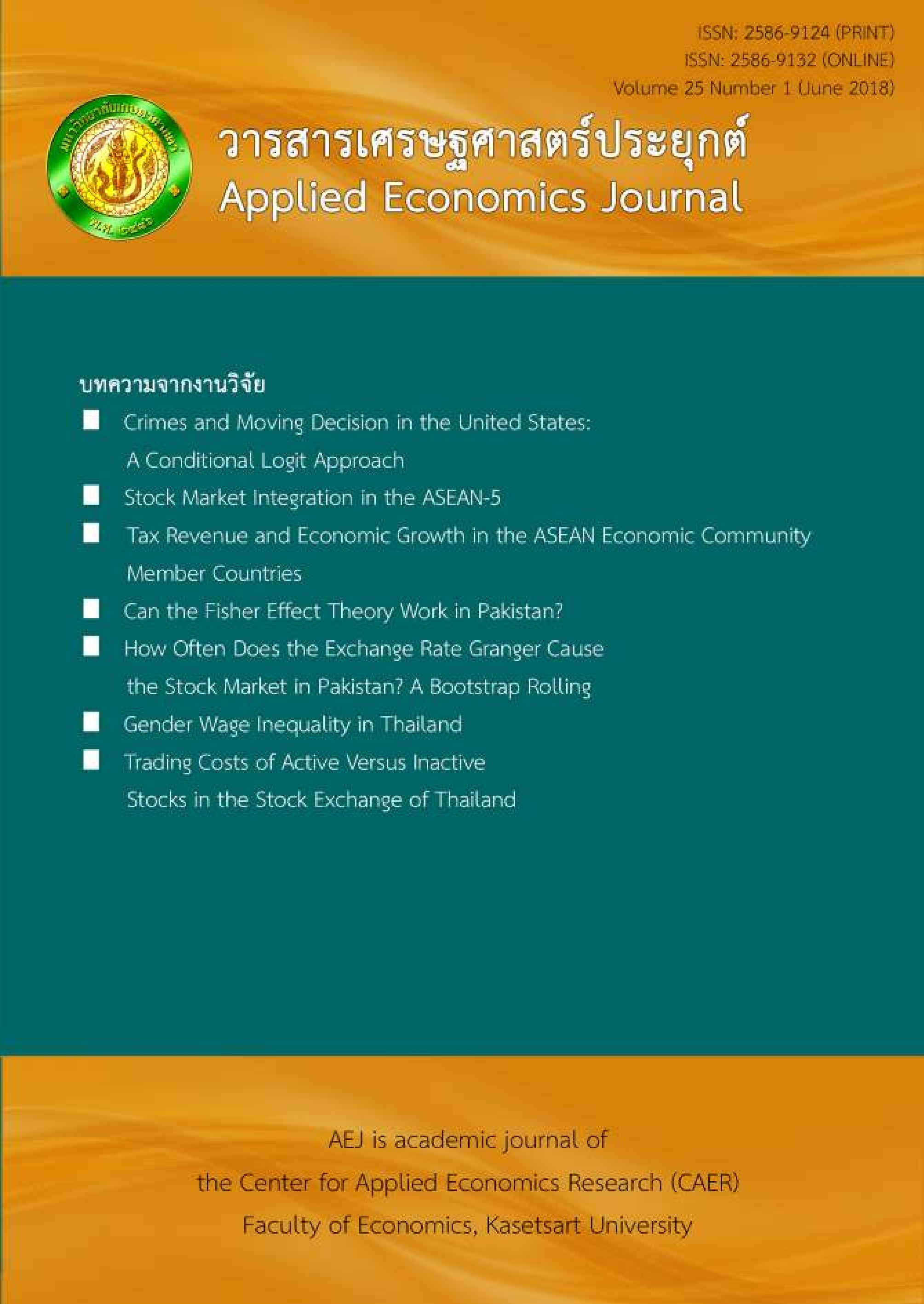Trading Costs of Active Versus Inactive Stocks in the Stock Exchange of Thailand
Main Article Content
Abstract
This study empirically estimates various implicit trading costs – namely, bid-ask spread cost, market impact or price impact cost, opportunity cost and total trading cost as measured by implementation shortfall of all orders submitted for 200 stocks listed on the Stock Exchange of Thailand during April to June year 2011. This study then compares these implicit trading costs between active and inactive stocks. This study finds that implementation shortfall cost for the orders submitted for SET50 (i.e., active) stocks is significantly lower than that for non-SET50- (i.e., inactive) stocks. Alternatively, the implementation shortfall cost of non-SET50 stocks is 50% higher, compared with the implementation shortfall cost of SET50 stocks. Specifically, an order submitted for non-SET50 stocks incurs much higher opportunity cost for the unexecuted portion in the order than that for SET50 stocks. In addition, after controlling for other factors such as order side (i.e., buy or sell) and order aggressiveness level, the implementation shortfall cost of non-SET50 stocks is still much higher. Finally, this study shows that liquidity-demanding orders incur higher implementation shortfall than liquidity-supplying orders do. This is because the unexecuted portion of liquidity-demanding orders has higher opportunity cost than that of liquidity-supplying orders. All these three orders have lower implicit trading costs for SET50 stocks than for non-SET50 stocks.
Article Details
The paper is published under CC BY-NC-ND, in which the article is freely downloaded and shared in its original form non-commercially and its citation details are identified.


